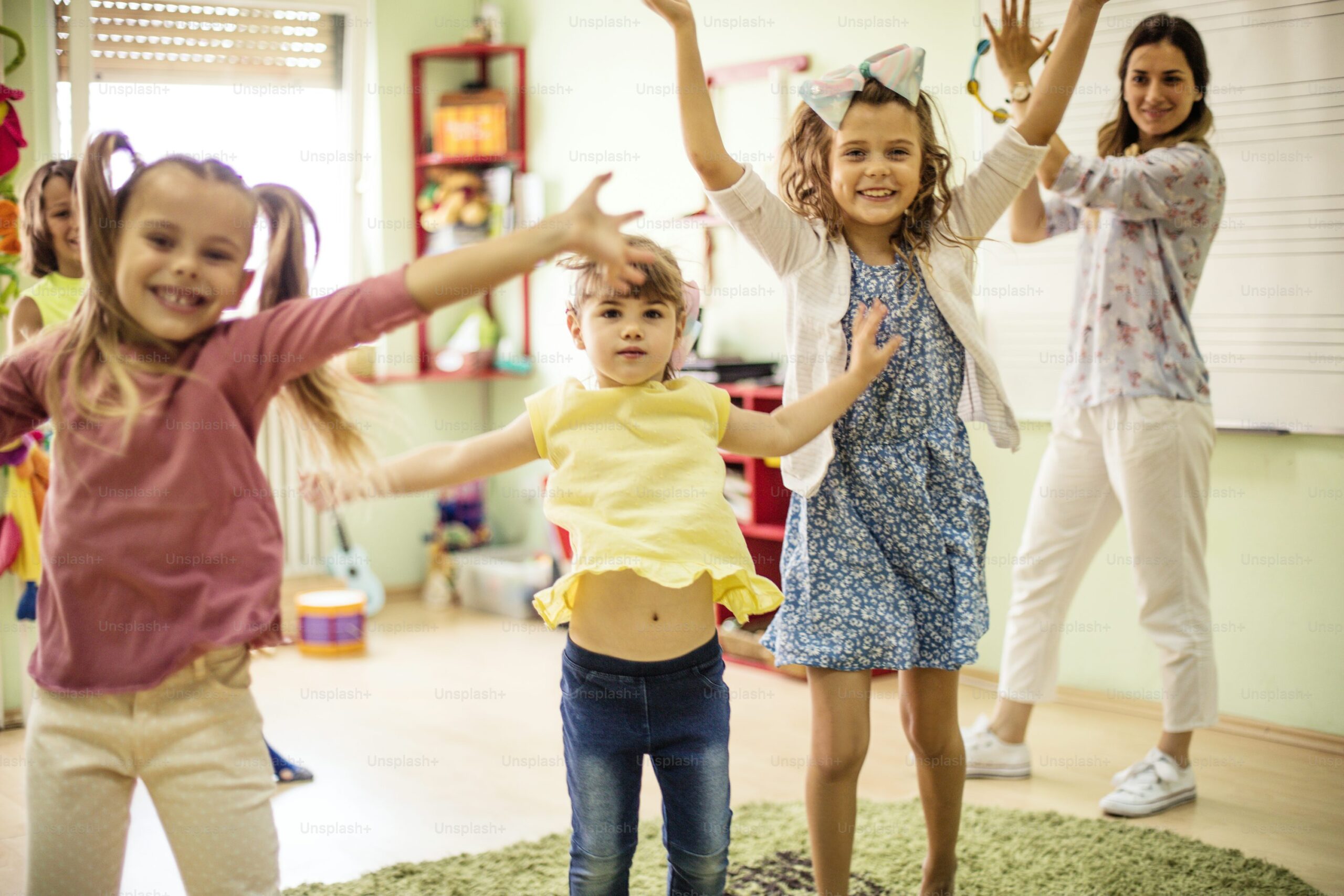In early childhood, creativity flourishes through movement and play, making dance an essential part of holistic learning. Research has consistently shown that dance-based learning supports physical development, cognitive growth, emotional intelligence, and creative thinking. Children build neural pathways that enhance problem-solving skills, imagination, and innovation by engaging in dance activities.
The Power of Dance-Based Learning for Preschool
Dance for child development is more than just fun; it’s a structured yet expressive outlet where children explore their surroundings, bodies, and emotions. Preschoolers, in particular, benefit from dance as it taps into their natural instincts for exploration and improvisation. Dance encourages them to think outside the box by presenting problems they can solve through movement.
For instance, creating different shapes with their bodies or moving in response to music stimulates spatial awareness and decision-making. Such activities, central to any well-designed dance curriculum preschool programs, also hone fine and gross motor skills, fostering physical coordination in young learners.
Moreover, teachers can integrate dance-based learning for preschool into their lesson plans to support academic skills like pattern recognition, which is foundational for math and language learning. Structured dance programs from platforms like Moververse help educators create age-appropriate activities that meet early childhood development goals and align with the cognitive, physical, and emotional needs of young learners.
Dance as a Gateway to Creative Thinking
Engaging preschoolers through dance provides a gateway to creative thinking by allowing children to express themselves without the constraints of verbal communication. It’s a powerful form of expression that lets children discover new ways to interpret the world around them. When children dance, they make choices—about movement, speed, and direction. This spontaneous decision-making process is integral to creativity.
When young children engage in dance improvisation, for example, they are solving problems in real time, tapping into their imagination to decide how their bodies should move. This process helps cultivate a growth mindset, where mistakes are seen as opportunities to try new movements or techniques, enhancing their creative thinking and resilience.
Building Emotional and Social Intelligence Through Dance
Dance also plays a significant role in social-emotional learning. Preschoolers learn empathy, collaboration, and emotional regulation through movement-based activities. For example, partner dances, where children mirror each other’s movements, teach empathy by helping them understand and respond to the feelings of their peers.
Social connection in dance is particularly powerful. Children feel a sense of belonging and community when participating in group activities. Encouraging young learners to dance together teaches cooperation and builds confidence, essential to developing emotional intelligence.
Through dance for child development, preschoolers gain the skills to navigate social relationships while learning how to express and manage their emotions. Dance allows for emotional release and self-regulation, helping children build resilience.
Dance Play as a Multisensory Learning Experience
Dance is a multisensory experience that stimulates different areas of the brain simultaneously. From hearing music to feeling the rhythm and moving their bodies, children engage multiple senses in dance activities, creating strong neural connections that aid in learning retention and comprehension. Studies have shown that dance and movement activities help improve memory, cognitive flexibility, and attention span.
Dance-Based Learning as a Long-Term Educational Strategy
Incorporating dance into the daily activities of preschoolers goes beyond physical development; it cultivates lifelong skills. Dance encourages children to approach challenges creatively, think critically, and collaborate effectively with others. These skills are foundational for future success in school and beyond.
By promoting engaging preschoolers through dance, educators can lay the groundwork for holistic development that supports academic success and the growth of creative and independent thinkers.

